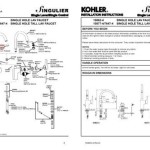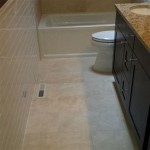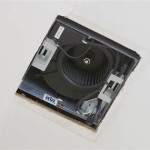Installing Bathroom Fan Ductwork
Installing a bathroom fan is a common home improvement project that can significantly enhance air quality and reduce moisture buildup within the bathroom. This installation often involves ductwork, which plays a crucial role in effectively transporting humid air from the bathroom to the exterior of the house. Proper ductwork installation is essential to ensure the fan operates efficiently and prevents potential problems like condensation and mold growth. This article will guide you through the process of installing bathroom fan ductwork, providing insights into the types of ductwork, materials, and tools required.
Choosing the Appropriate Ductwork
The choice of ductwork depends on factors like the distance between the fan and the exterior wall, the size of the bathroom, and the desired level of noise reduction. Common types of bathroom fan ductwork include:
- Flexible Ductwork: This type of ductwork is made of aluminum foil-backed, flexible tubing. It is highly versatile, easy to install, and suitable for short runs. However, it is susceptible to kinks and can create noise during ventilation.
- Rigid Ductwork: Often made of PVC or metal, rigid ductwork is more durable and less prone to noise than flexible ductwork. It is ideal for longer runs and areas where noise control is a priority. However, it requires more precision and skill to install.
For best results, consider using rigid ductwork for longer runs and flexible ductwork for short runs, such as connecting the fan to the rigid ductwork. Always choose ductwork with a diameter that matches the fan's outlet size to maximize air flow.
Installing Bathroom Fan Ductwork
The installation process can vary depending on the type of ductwork used and the existing bathroom layout. However, the general steps involved are:
1. Planning and Measuring:
Before starting the installation, carefully plan the ductwork path, considering its length, turns, and any obstacles that may need to be worked around. Measure the distance between the bathroom fan and the exterior wall to ensure you have enough ductwork. Also, confirm that the chosen ductwork size matches the fan's outlet. It is recommended to use a stud finder to locate wall studs for secure attachment.
2. Running the Ductwork:
For flexible ductwork, simply connect the ductwork to the fan's outlet and guide it to the exterior wall. Make sure to secure the ductwork using duct tape or clamps every few feet to prevent sagging and maintain airflow. For rigid ductwork, use appropriate connectors and fasteners to join sections and ensure tight seals to prevent air leaks. If necessary, use a miter saw to cut sections of rigid ductwork to fit the desired angles.
3. Vent Termination:
At the exterior wall, install a vent termination to direct the air outside. This could be a simple grille or a louvered vent. The vent termination should be securely fastened to the wall to prevent water from entering the ductwork. When choosing a vent termination, consider its size and material to ensure proper airflow and prevent any obstructions. Ensure that the vent is positioned away from any potential obstructions like windows, air conditioning units, or other ventilation systems.
4. Sealing and Testing:
After installing the ductwork, thoroughly seal all joints with duct tape or sealant to prevent air leaks. Use a sealant that is compatible with the type of ductwork material used. Once the ductwork is sealed, test the fan by turning it on and verifying that the air is being effectively exhausted to the exterior. If you notice any leaks or obstructions, address them immediately to ensure proper ventilation. It is also prudent to check for any air leaks around the fan housing and address them accordingly.
Key Points for Successful Installation:
Here are some crucial points to consider for a successful bathroom fan ductwork installation:
1. Ventilation Codes:
Familiarize yourself with local building codes and regulations regarding bathroom ventilation, ductwork size, and vent placement. Ensure that your installation complies with these codes to avoid potential issues and ensure the system operates safely and efficiently.
2. Noise Reduction:
If noise reduction is a priority, opt for rigid ductwork and consider installing duct mufflers or acoustic insulation within the ductwork to minimize air noise during operation.
3. Safety and Inspection:
Always prioritize safety during installation, using appropriate tools and safety gear. After completing the installation, thoroughly inspect the work to ensure that all connections are secure, there are no air leaks, and the fan operates properly. Regular maintenance and cleaning of the fan and ductwork will ensure optimal performance over time.
Installing bathroom fan ductwork is a relatively straightforward project, but it requires proper planning, execution, and attention to detail to ensure optimal ventilation and prevent potential issues. By adhering to the steps outlined above, you can ensure the effective installation of your bathroom fan ductwork while promoting a healthier and more comfortable living environment.

Installing A Bathroom Fan Fine Homebuilding

Venting A Bath Fan In Cold Climate Fine Homebuilding

Blog

Bathroom Exhaust Fans Building America Solution Center

Install A New Bathroom Vent Fan Light The San Fernando Valley Sun

How To Install A Bathroom Fan Diy Family Handyman

Air Sealing Bathroom And Kitchen Exhaust Fans Building America Solution Center

Domestic Fan Installation Compliance Checker Vent Axia

Bathroom Exhaust Fans Building America Solution Center

Bathroom Fan Venting Tips Gui
Related Posts







